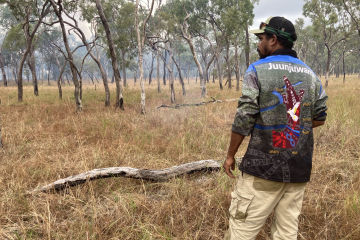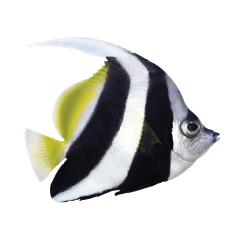Project News ·
A nature-based solution for a healthier Reef
Seaweed Biofilters: A scientifically grounded, long-term nature-based solution to achieve large scale impacts to help protect the Great Barrier Reef.

The iconic Great Barrier Reef (the Reef) faces ongoing threats from poor water quality, specifically elevated levels of dissolved inorganic nitrogen (DIN). This excess DIN fuels algal overgrowth, crown-of-thorn starfish outbreaks, and reduces coral resilience. The Australian Seaweed Institute (ASI) is developing a novel solution using native seaweed biofilters as a nature-based approach to improve water quality.
ASI’s network of “Seaweed Biofilters” provides a scalable, sustainable approach that complements existing on-farm land management practices. While these practices are essential, innovative solutions are required to address the scale of the problem and tackle diffuse source pollution, especially DIN, reaching the GBR from catchment waterways.

Source: Australian Seaweed Institute
How it Works: Targeted Filtration with Native Species
ASI is pioneering a networkable system leveraging the inherent biological capacity of fast-growing native seaweed species as biofilters. These biofilters absorb excess nutrients, including DIN and carbon dioxide.
ASI’s approach is to use fast-growing, native seaweed species in targeted locations to actively absorb excess nutrients, including DIN and carbon dioxide, as water flows through.
The system is designed to be sustainable with minimal waste produced. The seaweed is harvested for uses like biofertiliser which holds potential for economic development in regional Queensland, creating local jobs and becoming self-sustaining.
ASI CEO Jo Kelly said, “The harvested seaweed would then be sold as a beneficial ingredient for use in bioproducts such as animal feed and fertiliser generating a return.”
Native seaweed aquaculture requires no inputs, further enhancing its sustainability.

Source: Australian Seaweed Institute
Seaweed selection and field trials
Field trials were conducted at Orpheus Island scientific research zone and the Port of Lucinda, 100km north of Townsville. Trials involved the development, building, and installation of “biopods” to grow seaweed.
ASI partnered with CQUniversity’s Coastal Marine Ecosystems Research Centre (CMERC) to find the most suitable species.
“From more than one thousand species of seaweed that are native to the Reef, a shortlist of species was selected to proceed to trial based on a multicriteria analysis including nitrogen uptake rates, growth rates, ability to grow in turbid water conditions and potential market for products,” said Jo Kelly.
“This resulted in Sargassum spp. and Asparagopsis taxiformis proceeding to an 18-month growth trial at Orpheus Island scientific research zone.”

Sargassum spp. harvested as part of the trial.

Source: Australian Seaweed Institute
Scaling the solution
To ensure the strategic placement of full-scale biofilters, ASI is collaborating with CSIRO to model DIN reduction in priority catchments. The modelling supports a feasibility study that will guide future installation of seaweed biofilters for maximum DIN removal while also being logistically feasible and gaining community approval.
“Seaweed Biofilters are a scalable, modular solution to protect the Reef from water pollution and build resilience to climate change,” Jo Kelly concluded.
ASI’s Seaweed Biofilter concept design, field trials and modelling are funded through the Reef Trust Partnership Water Quality Innovation Program, funded through the partnership between the Australian Government’s Reef Trust and Great Barrier Reef Foundation.
“Our solution is for a network of Seaweed Biofilters in targeted locations across the Great Barrier Reef catchment to remove nitrogen and carbon dioxide loads that are damaging coastal ecosystems and the Great Barrier Reef,” said Jo Kelly.
Find out more: Seaweed Biofilters — Australian Seaweed Institute
Source: Australian Seaweed Institute
#Related

Project News ·
Community at the forefront of Reef water quality protection

Project News ·


